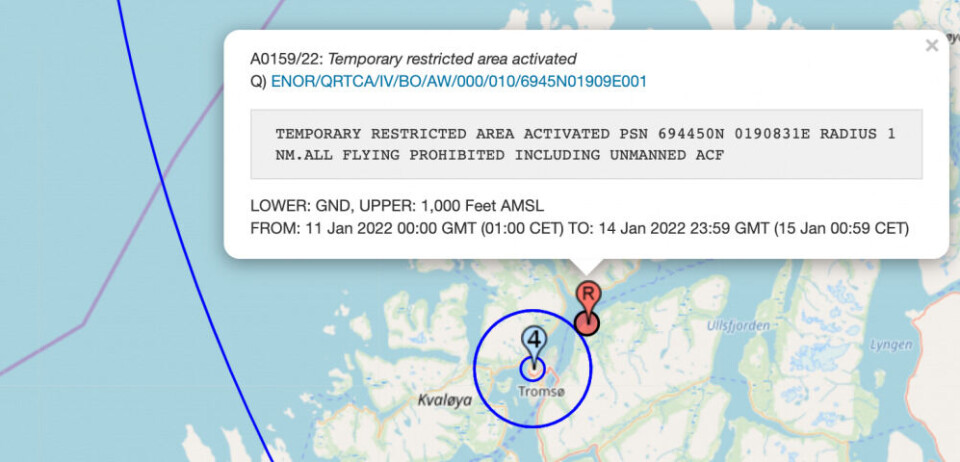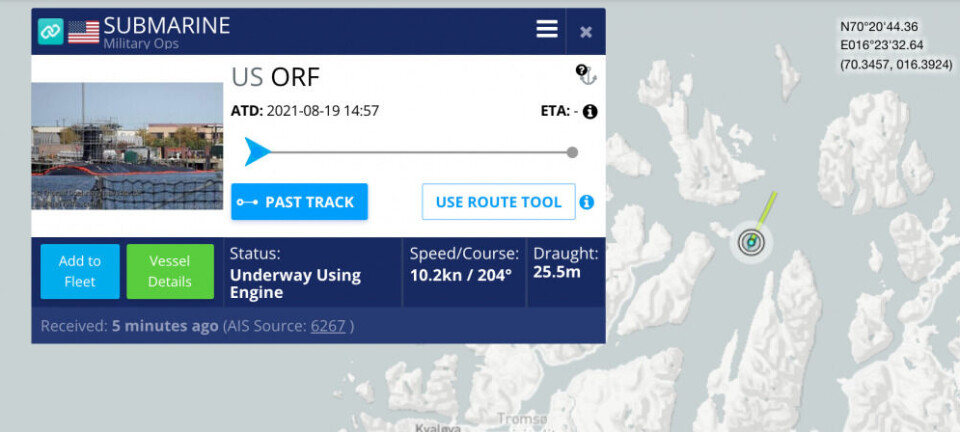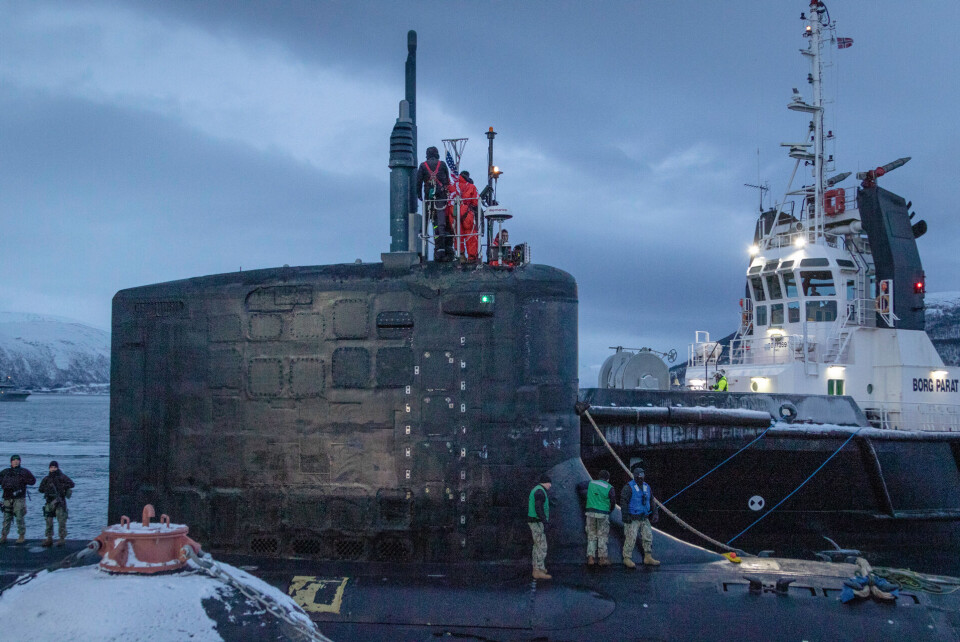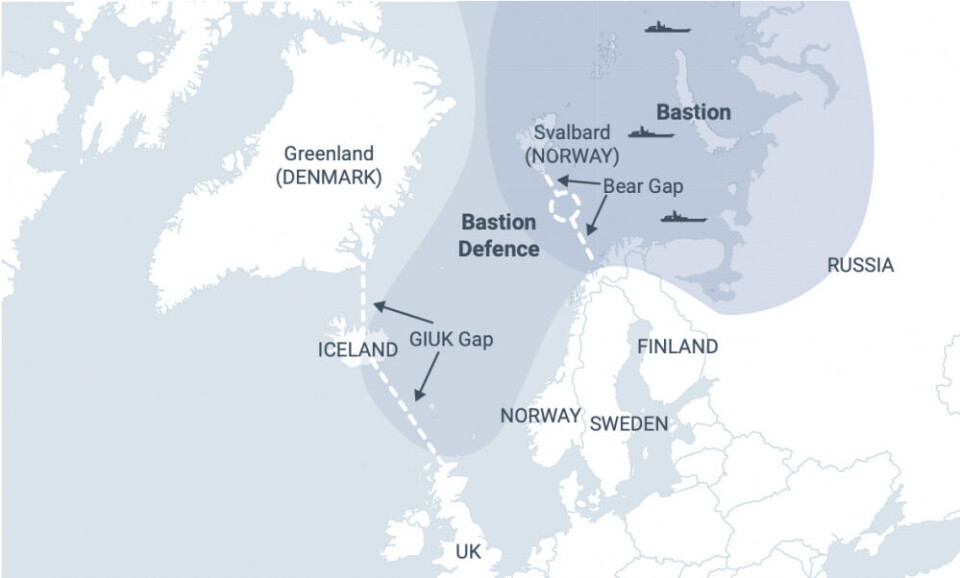
US nuclear subs makes port call in Tromsø to collect supplies
The U.S. nuclear-powered submarine "USS Washington" is armed with cruise missiles and is tasked to patrol northern waters where Russian submarines sail out from the Kola Peninsula.
A NOTAM warning (Notice to Airmen) is activated in a two kilometers radius around the port of Grøtsund north of Tromsø for the period January 11 to 14. Such no-fly zone, which also includes private drones, is aimed at limiting threats to the reactor-powered vessel.

On the ground, rapid reaction force Claymore (Home Guard District 16) along with the Navy, Coast Guard and an amphibious unit are in charge of the safety, the Norwegian Armed Forces informs. The police, municipal port authorities and the Radiation and Nuclear Safety watchdog DSA assist in the preparedness work.
Spokesperson with the Norwegian Joint Head Quarters, Major Elisabeth Eikeland, says to the Barents Observer that the sub now visiting Tromsø is the “USS Washington”, one of the newest Virginia-class attack submarines of the United States Navy.
The submarine has been out at sea since sailing out from Faslane naval base in Scotland on November 8 last year. Homeport is Norfolk on the US east coast.
The “USS Washington“ sailed in from Lopphavet in the north and surfaced Tuesday morning between the two islands of Arnøya and Vannøya from where she was escorted to port in Grøtsund by the Coast Guard vessel “KV Heimdal” and the military ops “KNM Oddane”, a tug and a pilot vessel.

US nuclear-powered submarines have over the last few years increased sailings in the north. Crew change and supply arrangements have previously been arranged in the fjords outside Troms in northern Norway. The first port call to the civilian municipal harbor at Grøtsund happened in May last year with the “USS New Mexico”.
Normally, Grøtsund serves civilian vessels in Tromsø, including the oil and gas supply activities offshore northern Norway.
In recent years, NATO submarines have been inshore Norwegian waters 3 to 4 times per month for crew change or getting supplies. The majority is up north, as previously reported by the Barents Observer.
In August 2020, the “USS Seawolf” conducted a brief stop in the fjord near Tromsø for personnel change before sailing out to waters inside the Arctic Circle.

Like it was during the Cold War, NATO submarines making port calls to northern Norway is the new normal as tensions mount between Moscow and NATO.
New submarines of the Russian Northern Fleet sail more silent than the older Soviet-designed vessels. And they sail more frequently out from the Barents Sea to the west of North Cape, into the deeper Norwegian Sea. That worries NATO.
Typically, an American submarine on a mission in the Norwegian Sea would not want to sail all way south to Haakonsvern near Bergen or to a naval base in the United Kingdom to put on shore a crew member or pick up some new devices or supply. Surfacing near the area where the cat-and-mouse hunt with the Russians takes place saves time.

Of key importance for Moscow in case of conflict is to ensure the survivability of its second-strike nuclear assets, the ballistic missile submarines based with the Northern Fleet on the coast of the Kola Peninsula
In such a scenario, sailing Russian attack submarines west of the so-called Bear Gap will make it much harder for NATO to track them in the deeper parts of the North Atlantic. That is why U.S. and NATO submarines are more present outside the coast of northern Norway today than before 2014.

















